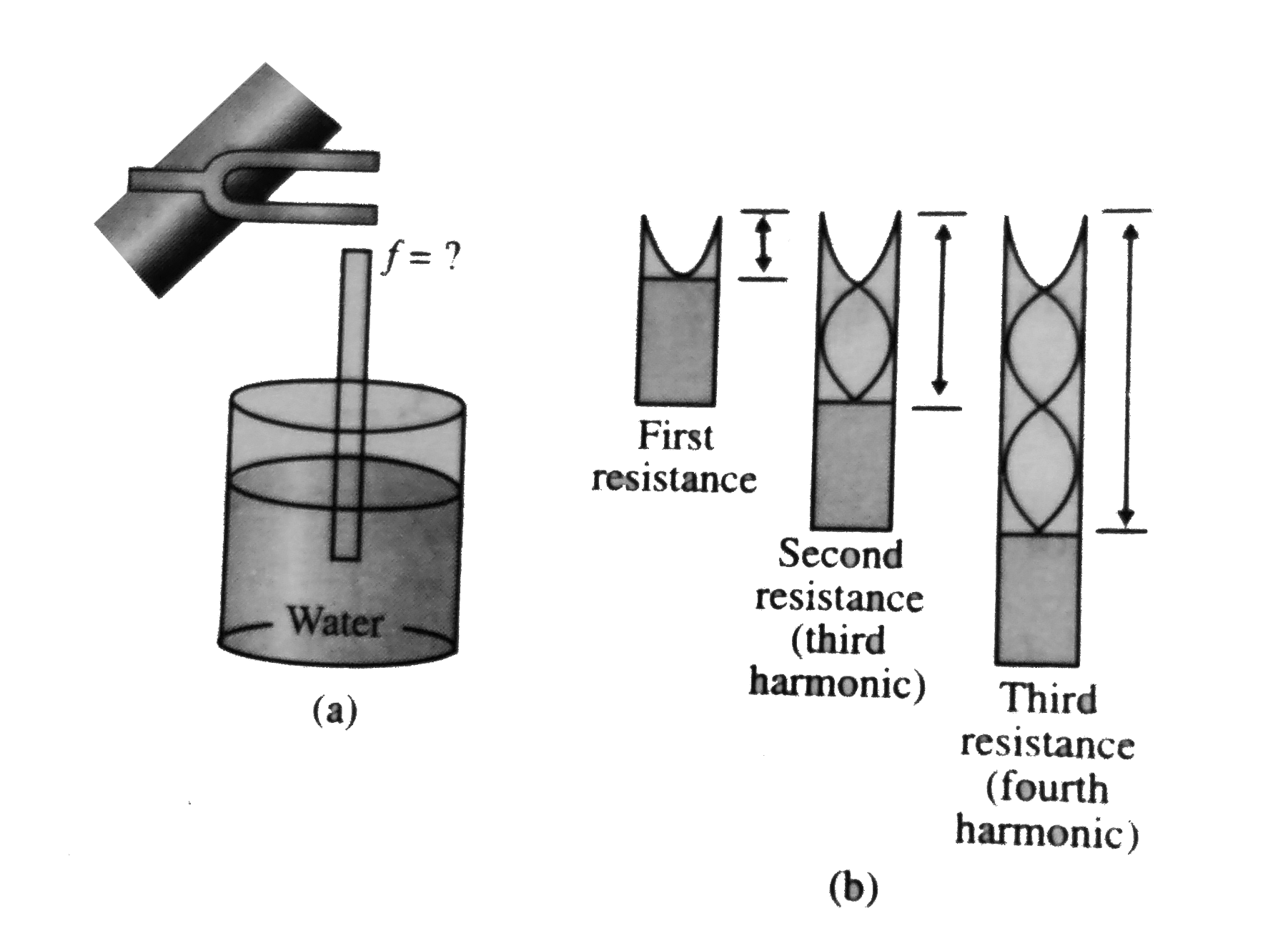What is "End correction" in resonating air column?
Step-by-Step Solution:
1. Definition of End Correction: End correction refers to the adjustment made to the length of a resonating air column (or resonant pipe) to account for the effects of the open ends of the pipe on the resonant frequency.
2. Reason for End Correction: When sound waves resonate in a pipe, the actual length of the air column does not solely determine the resonant frequencies. The ends of the pipe influence the effective length due to the way sound waves behave at the boundaries.
3. Addition or Removal of Length: To calculate the resonant frequency accurately, we either add or remove a certain length from the original length of the air column. This adjustment is necessary because the sound waves do not terminate exactly at the physical ends of the pipe; they extend slightly beyond them.
4. Calculating Resonant Frequency: The resonant frequency can be calculated using the formula:
f=n⋅v2L′
where f is the resonant frequency, n is the mode number (1 for fundamental frequency, 2 for first overtone, etc.), v is the speed of sound in air, and L′ is the effective length of the air column after applying the end correction.
5. Conclusion: In summary, end correction is a crucial factor in accurately determining the resonant frequencies of air columns in pipes, as it compensates for the effects of the open ends on the sound waves.
f=n⋅v2L′
where f is the resonant frequency, n is the mode number (1 for fundamental frequency, 2 for first overtone, etc.), v is the speed of sound in air, and L′ is the effective length of the air column after applying the end correction.
Topper's Solved these Questions
- BOOK - AAKASH SERIESCHAPTER - WAVE MOTION AND SOUNDEXERCISE - PROBLEMS (LEVEL - I)59videos
WAVE MOTION AND SOUND
- BOOK - AAKASH SERIESCHAPTER - WAVE MOTION AND SOUNDEXERCISE - PROBLEMS (LEVEL - II)97videos
WAVE MOTION AND SOUND
- BOOK - AAKASH SERIESCHAPTER - WAVE MOTION AND SOUNDEXERCISE - EXERCISE (SHORT ANSWER QUESTIONS)13videos
WAVE MOTION AND SOUND
- BOOK - AAKASH SERIESCHAPTER - WAVE MOTIONEXERCISE - PRACTICE SHEET ADVANCED (INTEGER TYPE QUESTIONS)10videos
WAVE MOTION
- BOOK - AAKASH SERIESCHAPTER - WAVE OPTICSEXERCISE - PROBLEMS (LEVEL - II)33videos
WAVE OPTICS
Similar Questions
A resonance tube is resonated with tunning fork of frequency 256Hz. If the length of foirst and second resonating air coloumns are 32 cm and 100cm, then end correction will be
View SolutionThe end correction of a resonance column is 1 cm. If the shortest length resonating with the tunning fork is 10 cm, the next resonating length should be :
View Solution
Knowledge Check
- Question 1 - Select One or More
velocity of sound in air is 320 m/s. A pipe closed at one end has a length of 1 m. Neglecting end corrections, the air column in the pipe can resonates for sound of frequency
A80 HzB240 HzC320 HzD400 Hz
A simple apparatus for demonstrating resonance in an air column is depicted in Fig. 7.59.A vertical pipe open at both ends is partially submerge in water , and a tuning fork vibration at an unknown frequency is placed near the top of the pipe . The length L of the air column can be adjusted by moving the pipe vertically . The sound waves generated by the fork are reinforced of the pipe . For a certain pipe , the smallest value of L for which a peak occurs in the intensity is 9.00cm.
a. What is the frequency of the tuning fork ?
b. What are the values of L for the next two resonance conditions? View Solution
View SolutionA narrow pipe of length 2m is closed at one end. The velocity of sound in air is 320 m/s. Neglecting end corrections , the air column in the pipe will resonate for sound of frequencies :
View SolutionSpeed of sound in air is 320m/s . A pipe closed at one end has a length of 1m and there is another pipe open at both ends having a length of 1.6m . Neglecting end corrections, both the air columns in the pipes can resonate for sound of frequency
View SolutionWhat is meant by the end correction ?
View SolutionVelocity of secnod in air is 320 m/s. Neglecting end correctionss, the air column in the pipe can resonate for sound of frequency
View SolutionIn an experiment to measure the speed of sound by a resonating air column, a tuning fork of frequency 500 Hz is used. The length of the air column is varied by changing the leavel of water in the resonance tube. Two successive resonances are heard at air columns of length 50.7 cm and 83.9 cm. Which of the following statements is (are) true?
View SolutionA stationary wave is set up in a resonance air column of a glass tube partially filled with water by holding a tuning fork near the open end, the open end of the tube is :
View Solution
